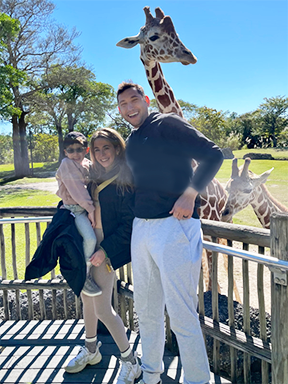The story of Iris
When your child gets sick, as a parent, your first instinct is to help them. You rush them to the doctor to learn how to make them better. But what if the doctor tells you there is no treatment, there is nothing to do and your child is going to get worse, much worse.
This is the devastating reality my husband and I faced when our four year old son Hunter was diagnosed with an ultra-rare neuromuscular disease, Charcot-Marie-Tooth Disease Type 4B3.
The disease will painfully cause our 4 year old son’s muscles to waste away and leave his little hands and legs deformed and paralysed, as well as potentially cause him to go blind.
Hunter spent the first few nights of his life in the NICU due to his low birth weight. When he was released we assumed the hard part was over and we were taking home a happy healthy little boy. Within a few months, we began to notice that Hunter was missing his developmental milestones. He was late to turn over, sit, crawl and then walk. We sought opinions from renowned specialists in New York City, but they all had the same answer, “don’t worry, he will catch up.” Unwilling to wait, we had genetic testing done when he turned one. We were relieved when the tests came back negative, but we were still puzzled.
In May of 2020, we were totally blindsided when the geneticist telephoned us with the devastating diagnosis. Other than his difficulties walking and near sightedness, Hunter is your typical 4 year old social boy. In that moment, the life we had hoped for our wonderful child was gone.
Ready to spring into action we ran to every pediatric CMT expert, only to be told there was nothing to do but come back in a year to track the progression of the disease. We were now living our worst nightmare.
There are no treatments or cures for any type of CMT. CMT is the most prevalent Peripheral Nerve disease that no one has ever heard of.
Not willing to sit by and watch Hunter waste away, we choose to fight. We may not be able to fix the damage that is already done, but we can stop the progression of the disease. We have rallied a worldwide team of scientific experts to develop a cure. We are in a race against time.
We connected with other “rare” parents facing the same struggles as us, who set up foundations to develop treatments for their children’s rare diseases. Their success is our inspiration.
This was a huge learning curve for us since we do not have a science background. We stayed up all night reading books on molecular biology and combing the internet for any information related to CMT4B3 and gene therapies.
Within weeks of the diagnosis we began to reach out to scientists worldwide. I was in shock; scientists from around the world wrote back to us, interested in Hunter, interested in CMT4B3 and most importantly wanted to help. A scientific team in London requested Hunter’s skin biopsy sample to test his protein levels.
Our dream of developing a treatment and saving our son was starting to become a reality.
On November 18, 2021, only six months after the diagnosis, we held the first CMT4B3 Research Symposium, attended by over 25 world renowned specialists. Culminating in a research roadmap, and a Scientific Advisory Board who will continue to critique and build our research network.
We have started the search for other CMT4B3 patients. At the time of his diagnosis, Hunter was only one of fifteen known patients worldwide. We have since doubled our patient population. The more patients we can compare, the more we can learn about the disease. We are a United Nations of patients with confirmed cases in the U.S., Spain, Italy, Germany, South Korea, Romania, London, Saudi Arabia, Lebanon, Iran, Syria and our list is growing.
We know there are many more children suffering from CMT4B3 that are undiagnosed or misdiagnosed.
We hope by sharing our story we can help other rare families. We are so grateful to all the doctors, scientists, researchers, companies, communities, neighbors, and complete strangers who have helped fund our research and give us hope. The groundbreaking treatments we develop will not only help CMT4B3 patients, but can also translate into treatments for thousands of children suffering from rare neuromuscular and peripheral nerve diseases.
